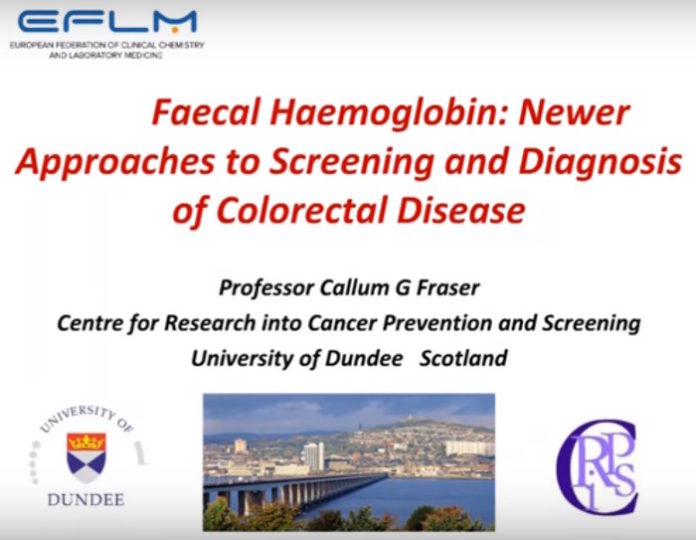Presenter: Callum G. Fraser (UK)
Moderator: Sally C Benton (UK)
Colorectal cancer (CRC) is still a very important health problem world-wide. It is the third most common cancer and the fourth leading cause of cancer-related death. Fortunately, many screening programmes have now been set up to detect neoplasia in those who do not have any symptoms of bowel disease. These programmes lead to early detection of CRC and its precursors, which significantly improves outcomes. There are a number of strategies available for CRC screening, but faecal immunochemical test for haemoglobin (FIT) are now considered as the best currently available non-invasive investigation and are being widely established. FIT are available in two formats, qualitative FIT and quantitative FIT: the former are often used in opportunistic screening, whereas the latter are widely used in population-based programmatic screening. Quantitative FIT have many advantages, a major benefit being that the faecal haemoglobin concentration (f-Hb) can be estimated. This Webinar will explore the diagnostic accuracy of FIT, and factors affecting f-Hb, including age, sex and socioeconomic status. The difficulties in selecting the f-Hb cut-off to be used for CRC screening will be addressed in detail.
However, most CRC are not detected through screening programmes, but when a person with symptoms seeks medical advice. The symptoms of serious bowel disease are very common presentations in primary care, but most with these do not have serious disease. Generally, people with symptoms are referred to secondary care for colonoscopy, which is inadequate in many countries. A particular problem is that the number of patients with symptoms being referred from primary care is increasing rapidly, in large part due to local, regional and national campaigns raising awareness of the need to get symptoms investigated. This Webinar will discuss the significant evidence now available that demonstrates that triage using FIT at a low cut-off around 10 μg Hb/g faeces has the potential to correctly rule-out CRC and avoid colonoscopy in many symptomatic patients. Importantly, secondary care referral following a positive FIT allows the identification of other significant bowel pathology in patients who are found not to have CRC, mainly inflammatory bowel disease. This very recent use of FIT is an excellent example of translation of research into clinical practice: the first study investigating the use of quantitative FIT using numerical data on f-Hb was published on-line in 2012 and, only five years later, a national guideline has recommended its use in routine clinical practice.











